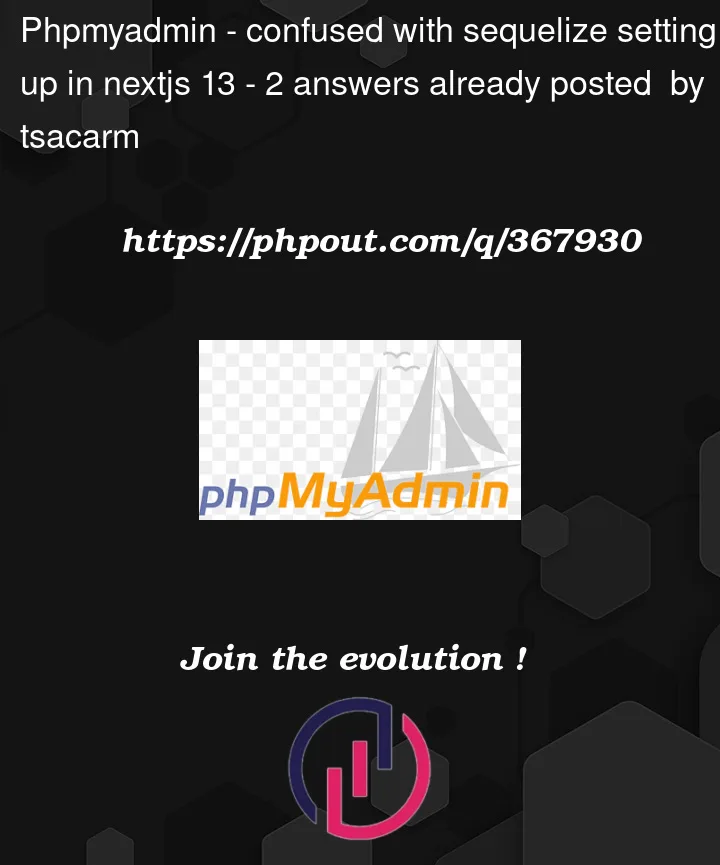I’ve spent considerable time researching database configuration using Sequelize in various tutorials, blogs, and documentation. Many sources claim that Sequelize should automatically create a database and tables if they don’t exist. However, in my own project, this doesn’t seem to be the case. Whenever I attempted to run my project, it consistently returned an "unknown database" error. The issue persisted until I manually created a database using phpMyAdmin.
My frustration led me to explore a GitHub project (https://github.com/iambstha/nextjs-postgresql-sequelize) to see if I could identify similar challenges. To my surprise, I encountered the same problem: Sequelize did not create the necessary database automatically, leading to the same "unknown database" error.
I’m now questioning whether I’ve misunderstood something fundamental about Sequelize database configuration. Despite extensive research, I’ve been unable to find a solution, and I’m seeking assistance in understanding the proper way to configure the database. This has been a perplexing issue that I’ve been grappling with for an entire day. Can someone help clarify what might be missing or incorrect in my approach?
please help
thanks in advances




2
Answers
Sequelize can only create tables, indexes and foreign keys in the existing DB.
From the official documentation:
SO you can either use
syncmethods of models or Sequelize instance itself (which can be used for small/dev projects and projects where DB structure rarely changes) to create the structure you need OR use migrations (which is better for bigger projects and for production environments).I’d recommend to use migrations as more predictable than the
syncmethod.I hope my solution is to the point. I had exactly the same issue with Next.js 14.x. It was on Docker running MySQL container. The connection was processed through the sequelize ORM which was throwing exactly the same issue.
The solution:
call to the sequelize connection should be processed before calling
any other sequelize functions.
In the Next config file add sequelize in array serverComponentsExternalPackages
And, assign MySQL2 in the dialectModules.
See the video https://youtu.be/jO8y1vHsyD0?si=kmSvKqBDBdMDqYSJ for more details.
I hope this solves everyone’s problem.